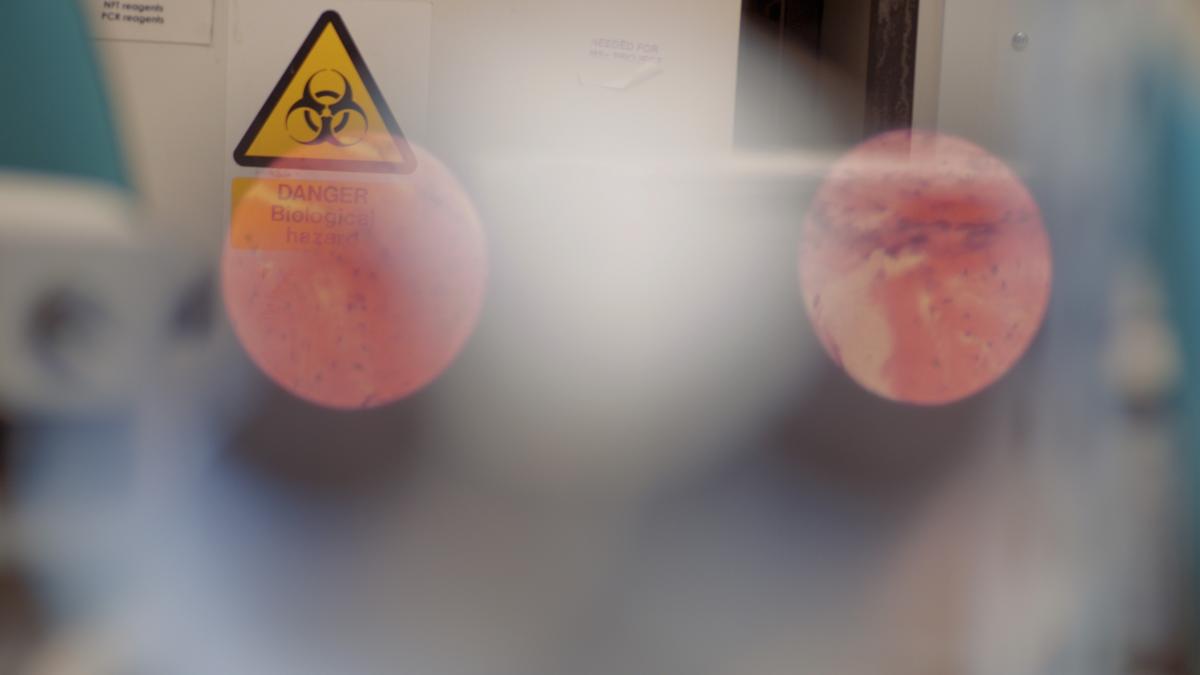Meet Resident Fellow, artist and filmmaker Ilona Sagar
The Resident Fellow programme is aimed at international artists and researchers, who are invited to the Academy of Fine Arts to inspire its teaching activities and to raise students’ awareness of the diverse range of artistic practices and cultures.

The resident fellow programme is a part of the International Incubators in Fine Arts project, supported by the Saastamoinen Foundation.
Who are you and what do you do at Uniarts Helsinki’s Academy of Fine Arts?
I am here for three months with the Saastamoinen Foundation x Uniarts Helsinki developing preliminary research into a new body of work exploring the politics of scientific optical imaging particularly brain scanning through a gendered lens with a focus on brain injury.
Research into concussion often focuses primarily on cis-men. Recent studies have shown cis-women and AFAB take longer to recover from head trauma and concussions, and have more severe symptoms than cis-men. Whether the production of medical diagnostic images, the trace left in an archive, or the protean realisation of an architect’s plan, I am thinking through the notion of after-image. What is an image, and how can it be used to navigate archival, present, and speculative societal space?
As a filmmaker I am always in alliance with a mechanical or machinic eye, sights I inhabit but exist outside of me. Our biological eyes have long been analogised with the sights of the camera, both devices being capable of framing and capturing objects at variable distances. When these visualising acts become extensions of our human sight, what dialogues are we producing with these technological impulses? Through film, sound-design and text, I intend to navigate tools of bodily observation within their sociological and technological context as a way to reapproach the gendered body and its historical after-images at the edges between vision and data.
How would you describe yourself as an artist?
A common thread in my practice as a whole is an interest in the social glue that brings us together, whether that is framed by architecture, design, technology or the messy and complex languages of social codes and hierarchies. I make work that explores the link between language, surface, technologies and the body through our increasingly mediated encounters in social, political and experiential space.
Recently, I have been exploring the contemporary deadlock between individual and collective notions of wellbeing within the social apparatus of health, considering the role that histories of work and radical health reform might play in understanding and rethinking these relationships. For me, the body and its health become a critical tool, a way to navigate, test and provoke a discussion sited in embodied notions of care, labour and civic space.
The subject of health is not only theoretical and academic, but also immediate, felt and realised in the body. Amidst global uncertainty and social unrest, the urgent nature of discourse surrounding health, technology and social mobility feels like a pressing subject to challenge and foreground.
What is the best thing about working as an artist?
I think Collaboration. An important aspect of my practice is the broad cross-disciplinary conversations that happen through collaboration with a range of disciplines and community knowledges and professions. I use film as the central part of my practice; it’s what everything oscillates around. I also work with performance, sound-design, text, and installation and see my work as a way of mediating lots of different conversations.
Why is it important to work internationally as an artist?
It’s really important to work in other contexts and cultures, to challenge your practice and to test your assumptions about how your work might be read and understood by a wider audience. Spending time in other countries is a great way to learn new skills and develop an understanding of other art scenes and how your way of working might translate. The methods that you work with may feel more at home or unhomely in other places. Working internationally is one way to understand where you want your practice to sit. It can be exploratory, concrete project development, skills learning or sharing, or a great way to expand your network.
Recommend something (an exhibition, event, book…)
Why It’s Taking So Long, Johanna Hedva
The Radio Ballads – Serpentine Galleries, London
Maintenance and Care, Shannon Mattern, Places Journal
Ilona Sagar’s artist talk and screening on 30 May
Time: 30 May 2022 at 17.00-19.30
Place: Cinema Kino13, Finnish Film Foundation, Kanavakatu 12 in Helsinki
PROGRAM
Artist talk, Ilona Sagar
Screening of “The Body Blow”
Questions and answers
Free entrance, warmly welcome!